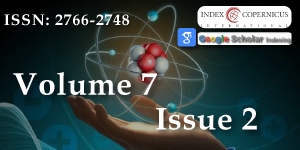Design and Construction of Automatic Facemask and Body Temperature Scanning Entry Barrier Machine
Main Article Content
Abstract
In the context of the global pandemic, public health screening has become paramount as the whole world including developed countries is going through a health crisis. A face mask prevents transpiration and protects against airborne transmitted bacteria or viruses. In the previous scenario of coronavirus, it was critical to eradicate this sickness and preserve our lives. Hence, prevention is better than cure becomes true. Accordingly, many precautionary measures were taken to reduce the spread of the virus. One such method of prevention is wearing a mask and regular monitoring of body temperature. This research dealt with the design and construction of an automatic entry barrier machine that integrates both facemask detection and scanning of individuals exhibiting elevated body temperature functionalities without any human interference. This was accomplished by simulating and synergizing a microprocessor (Raspberry Pi 3 Model B+), a Pi camera, an Infrared Non-contact Temperature sensor, a servo motor, and other components. The barrier arm opens and allows entrance at normal temperature by indicating a green light, displaying ‘allow’ on the LCD, and signaling once or preventing entrance at an elevated unacceptable temperature by indicating a red light, displaying ‘not allowed’ on the LCD, and signaling five (5) times.
Article Details
Copyright (c) 2024 Akingbade FS, et al.

This work is licensed under a Creative Commons Attribution 4.0 International License.
The International Journal of Physics Research and Applications is committed in making it easier for people to share and build upon the work of others while maintaining consistency with the rules of copyright. In order to use the Open Access paradigm to the maximum extent in true terms as free of charge online access along with usage right, we grant usage rights through the use of specific Creative Commons license.
License: Copyright © 2017 - 2025 |  Open Access by International Journal of Physics Research and Applications is licensed under a Creative Commons Attribution 4.0 International License. Based on a work at Heighten Science Publications Inc.
Open Access by International Journal of Physics Research and Applications is licensed under a Creative Commons Attribution 4.0 International License. Based on a work at Heighten Science Publications Inc.
With this license, the authors are allowed that after publishing with the journal, they can share their research by posting a free draft copy of their article to any repository or website.
Compliance 'CC BY' license helps in:
| Permission to read and download | ✓ |
| Permission to display in a repository | ✓ |
| Permission to translate | ✓ |
| Commercial uses of manuscript | ✓ |
'CC' stands for Creative Commons license. 'BY' symbolizes that users have provided attribution to the creator that the published manuscripts can be used or shared. This license allows for redistribution, commercial and non-commercial, as long as it is passed along unchanged and in whole, with credit to the author.
Please take in notification that Creative Commons user licenses are non-revocable. We recommend authors to check if their funding body requires a specific license.
Türker GF, Tanyeri K. Evaluation of Parameters Affecting the Risk of Contagion of COVID-19 Virus with Fuzzy Logic. Eur J Sci Technol. 2022;42:52-60.
Gupta M, Abdulsalam M, Mittal S. Enabling and enforcing social distancing measures using smart city and its infrastructures: a COVID-19 use case. 2020. Available from: https://arxiv.org/abs/2004.09246
Kaiser MS, Mahmud M, Noor MBT, Zenia NZ, Al Mamun S. iWorksafe: Towards healthy workplaces during COVID-19 with an intelligent P. health app for industrial settings. IEEE. 2021;9:13814-13828. Available from: https://ieeexplore.ieee.org/abstract/document/9317697/authors
Ray PP. An IR sensor based smart system to approximate core body temperature. J Med Syst. 2017;41(8):123. Available from: https://pubmed.ncbi.nlm.nih.gov/28695440/
Pan L, Wang C, Jin H, Li J, Yang L, Zheng Y, et al. Lab-on-Mask for Remote Respiratory Monitoring. ACS Mater Lett. 2020;2:1178-1181. Available from: https://pubmed.ncbi.nlm.nih.gov/34192277/
Kim N, Wei JLJ, Ying J, Zhang H, Moon SK, Choi J. Customized smart medical mask for healthcare personnel. In: Proceedings of the 2020 IEEE International Conference on Industrial Engineering and Engineering Management (IEEM); 2020;581-585. Available from: https://ieeexplore.ieee.org/abstract/document/9309863
Yildirim H, Işik K, Aylaz R. The effect of anxiety levels of elderly people in quarantine on depression during COVID-19 pandemic. Soc Work Public Health. 2021;36(2):194-204. Available from: https://doi.org/10.1080/19371918.2020.1868372
Mikami K, Kurebayashi R, Shi X, Inoue N, Matsuo Y, Yamasaki I. High-resolution multi-camera analysis infrastructure to support future smart cities. NTT Tech Rev. 2022;20(4):21-25. Available from: https://doi.org/10.53829/ntr202204fa3
Furr M, An JHD, Foster JS. Profile-guided static typing for dynamic scripting languages. ACM SIGPLAN Not. 2009;44(10):283-300. Available from: https://dl.acm.org/doi/abs/10.1145/1640089.1640110
Lyons KR, Margolis BWL. AxoPy: A Python library for implementing human-computer interface experiments. J Open Source Softw. 2019;4(34):1191. Available from: https://joss.theoj.org/papers/10.21105/joss.01191.pdf
Syed MA. Overview on Open-Source Machine Learning Platforms-TensorFlow. J Innov Dev Pharm Tech Sci. 2020;11-14. Available from: https://papers.ssrn.com/sol3/papers.cfm?abstract_id=3732837
Hoskins BL. Formation of flow units during high-rise building evacuations. Transp Res Procedia. 2014;2:385-393. Available from: https://www.sciencedirect.com/science/article/pii/S235214651400074X?via%3Dihub
Saeed U. Facial micro-expressions as a soft biometric for person recognition. Pattern Recognit Lett. 2021;143:95-103. Available from: https://www.sciencedirect.com/science/article/abs/pii/S0167865521000179
Sharma G, Bohara V, Balai LN. Simulation based performance analysis of histogram shifting method on various cover images. Int J Trend Sci Res Dev. 2018;2(4):907-911. Available from: https://www.ijtsrd.com/papers/ijtsrd14139.pdf
Pereira M, Velosa N, Pereira L. dsCleaner: A Python library to clean, preprocess and convert non-instructive load monitoring datasets. Data. 2019;4(3):123. Available from: https://www.mdpi.com/2306-5729/4/3/123
Ranjan V, Aishwarya Jyothi MP, Shamaa M, Vaishnavi AN, Smruthi BS. Intelligent barrier for face mask and body temperature detection. Int J Eng Res Comput Sci Eng (IJERCSE). 2022;9(6):12-18. Available from: https://www.technoarete.org/common_abstract/pdf/IJERCSE/v9/i6/Ext_94068.pdf

